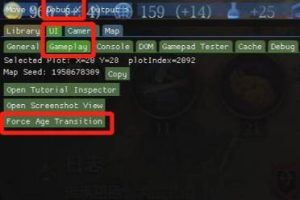
如何使用Redis和Lua开发简单的评分系统功能
在开发应用程序中,评分系统功能是一个常见的需求。使用Redis和Lua结合,可以快速实现一个简单而高效的评分系统。Redis是一种高性能的键值对数据库,而Lua是一种轻量级脚本语言,可以嵌入到Redis中执行。
评分系统功能的实现涉及以下几个方面:
- 用户投票:用户可以对特定的实体(如文章、视频、商品等)进行投票,可以选择赞成或反对。
- 计算分数:根据用户投票的结果,需要计算出一个综合的分数来衡量实体的好坏。
- 排序:根据分数进行排序,将实体按照用户的喜好和热度进行展示。
以下是一个使用Redis和Lua开发的简单评分系统的代码示例:
- 用户投票
-- 参数说明:
-- entityId: 实体的唯一标识
-- userId: 用户的唯一标识
-- voteType: 投票类型,1表示赞成,-1表示反对
function vote(entityId, userId, voteType)
-- 检查用户是否已经投过票,如果是则取消之前的投票
local prevVoteType = redis.call("HGET", "vote:" .. entityId, userId)
if prevVoteType == "1" then
redis.call("HINCRBY", "score:" .. entityId, "upvotes", -1)
elseif prevVoteType == "-1" then
redis.call("HINCRBY", "score:" .. entityId, "downvotes", -1)
end
-- 更新用户的投票记录
redis.call("HSET", "vote:" .. entityId, userId, voteType)
-- 更新实体的分数
if voteType == "1" then
redis.call("HINCRBY", "score:" .. entityId, "upvotes", 1)
elseif voteType == "-1" then
redis.call("HINCRBY", "score:" .. entityId, "downvotes", 1)
end
end
- 计算分数
-- 参数说明:
-- entityId: 实体的唯一标识
function calculateScore(entityId)
local upvotes = redis.call("HGET", "score:" .. entityId, "upvotes") or 0
local downvotes = redis.call("HGET", "score:" .. entityId, "downvotes") or 0
-- 分数计算规则可以根据实际需求进行调整
local score = tonumber(upvotes) - tonumber(downvotes)
-- 更新实体的分数
redis.call("HSET", "score:" .. entityId, "score", score)
return score
end
- 排序
-- 参数说明:
-- entityIds: 实体的唯一标识列表
function sortEntities(entityIds)
local scores = {}
for i, entityId in ipairs(entityIds) do
local score = redis.call("HGET", "score:" .. entityId, "score") or 0
scores[i] = {entityId, tonumber(score)}
end
-- 根据分数进行排序
table.sort(scores, function(a, b) return a[2] > b[2] end)
-- 返回按照分数排序后的实体列表
local sortedEntities = {}
for i, entity in ipairs(scores) do
sortedEntities[i] = entity[1]
end
return sortedEntities
end
通过将以上代码保存为一个Redis脚本,然后在程序中调用相应的脚本命令,即可完成简单的评分系统功能的开发。
以上示例代码仅为演示目的,实际的评分系统功能的实现可能更加复杂,如考虑用户权限、过期时间等。但这是一个简单而高效的评分系统的基础,可以根据实际需求进行扩展和调整。同时,结合Redis和Lua的特点,可以实现更高效的计算和存储操作,提升系统的性能和可扩展性。
原文来自:www.php.cn© 版权声明
文章版权归作者所有,未经允许请勿转载。
THE END



















































暂无评论内容